At the risk of sounding like an imposter myself, I have to ask: What is crime fiction? This is not, perhaps, a question that someone who has just published a crime novel ought to be asking. But the more I think about it, the more trouble I have answering it. The genre’s borders are decidedly blurry.
Is a crime novel simply a novel whose plot involves a criminal act? Perhaps we ought to throw in a measure of suspense too. But in that case, Ian McEwan’s Atonement (winner of the 2003 National Book Critics Circle Award) should be found on the “mystery and thrillers” shelf along with Gillian Flynn and Jane Harper.
Graham Greene famously drew a distinction between his thrillers, which he called “entertainments,” and his literary novels, but in later years even he admitted that the two types had increasingly begun to resemble one other.
Well, if the great Graham Greene can’t figure it out, then I’m willing to temporarily set the distinction aside and, in the spirit of inclusivity, welcome a few of my favorite books into the fold. None of the following would be found on the mystery shelf, but they each involve a trope that will be familiar to any fan of crime fiction: The imposter.
The most famous example of the literary imposer must be Tom Ripley in Patricia Highsmith’s masterpiece. The success of this book and its follow-ups (not to mention the movie) begs the question, Why do we love reading about imposters so much? There must be something in human nature that wants to vicariously experience an act of radical reinvention. After all, Americans buy nearly twenty million self-help book a year; clearly, people are interesting in changing their lives.
Imposters also raise all sorts of interesting questions about who we are and how we got that way; is it fate or self-determination? There’s something undeniably compelling about these men and women who take their identities into their own hands. They are, in a way, a perversion of the Great American Dream.
So even those these books don’t technically fall under the suspense heading, I suspect that they’ll keep you turning the pages to find out who these doubles, doppelgangers and conmen really are.
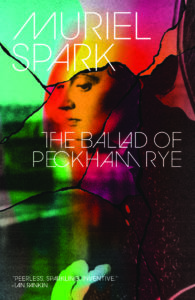
The Ballad of Peckham Rye by Muriel Spark
Nobody does black humor quite like Spark, and this book, published in 1960, is no exception. A stranger arrives in the village of Peckham Rye and introduces himself as either Dougal Douglas or Douglas Dougal, depending on his company. He lacks all scruples, is wont to answer the question “How’s life?” with a bored “It exists,” and he may or may not be the Devil. In short, he’s just the sort of psychopath you want to read about.
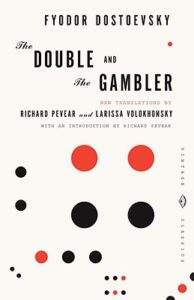
The Double by Fyodor Dostoevsky
Poor Mr. Goliadkin. A self-described “little man,” he happens to meet his double—both in appearance and name—on the street one night. He then has to watch as this other man takes over his life and successfully charms the very people he has failed to. I was reminded of him while watching Paul Rudd’s Netflix show “Living With Myself,” which perfectly captures the humor and existential angst that might arise from meeting your double and realizing he’s better at being you than you are.
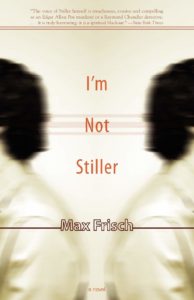
I’m Not Stiller by Max Frisch
This novel is presented as the anguished diary of a man sitting in prison in Switzerland, trying to convince the authorities that he is not Anatol Ludwig Stiller, a missing sculptor. Various friends, along with his wife, visit this man and attest to the fact that he is, in fact, Stiller. Our narrator will admit to all sorts of other misdeeds—including murder—but not to that. With sharp, unflinching humor that recalls Spark’s, Frisch raises intriguing questions about identity and accountability.

Andorra by Peter Cameron
Peter Cameron is a magnificent writer. This was the first book of his I read and it sucked me in with its originality and strange, mysterious tone. The narrator’s past is murky; we know only that he has dropped everything to start a new life in Andorra. “It is remarkable, the ease with which one can change one’s life, if one wants, or needs, to,” he says. Cameron also manages to create a doppelganger of an entire country: The Andorra of his book bears no resemblance to the actual European nation.
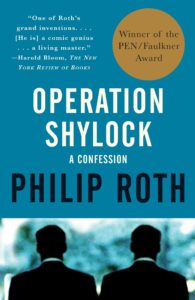
Operation Shylock by Philip Roth
In Philip Roth’s 1993 novel, a novelist named Philip Roth finds out that a man in Israel is claiming to be the American novelist Philip Roth (still with me?). The real Roth (of the novel), still shaky from a breakdown, manages to get the fake Roth on the phone. Of this encounter he writes: “To think that he was pretending at his end of the line to be me while I was pretending at my end not to be me gave me a terrific, unforeseen, Mardi Gras kind of kick.” The entire novel, like most of Roth’s work, gives the reader herself a Mardi Gras kind a kick.
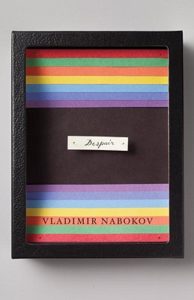
Despair by Vladimir Nabokov
Not surprisingly, given Nabokov’s striking originality, this book subtly subverts the doppelganger genre. Our narrator comes across a homeless man who he is convinced looks so much like him that he can pull off an insurance scam by killing him. In fact, the man looks nothing like our deluded narrator. Nevertheless, he raises the question that perhaps all fiction about imposters does: “Is it indeed a crime in itself for two people to be as alike as two drops of blood?”

Passing by Nella Larson
You might have heard of this novel recently because a movie adaptation starring Ruth Negga is coming to Netflix this fall. Published in 1929, Passing tells the story of a young biracial woman, Clare Kendry, who passes for white. Neither her husband nor her daughter know the truth, and she builds up her newfound identity as deftly as an actress, right down to the clothes. But as she starts spending more time with a childhood friend, our narrator, who is also biracial, her secret life threatens to implode.
***


















